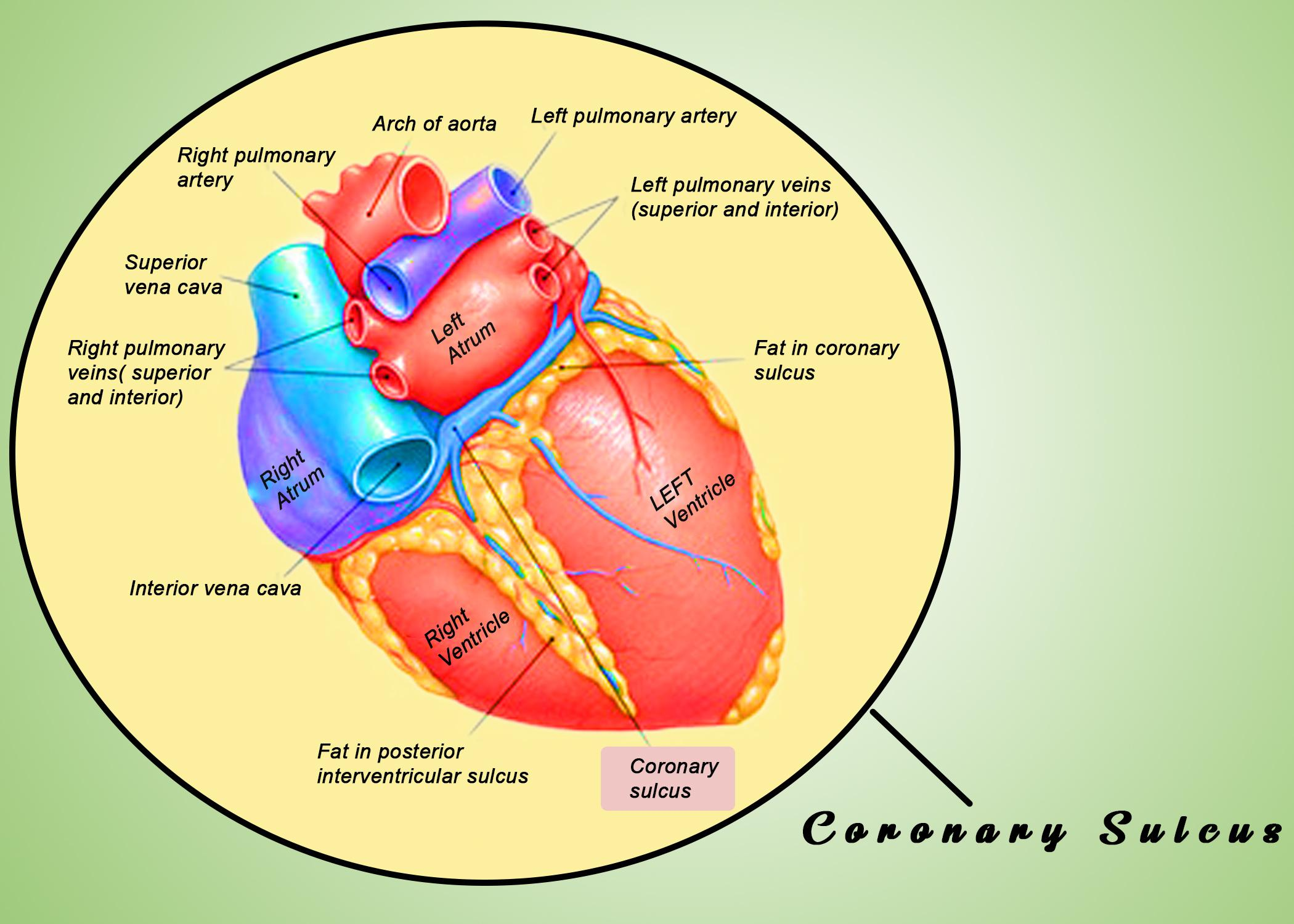
What is a coronary Sulcus?
(a)Transverse groove
(b)Longitudinal sulcus
(c)Also known as the interventricular sulcus
(d)Inter-articular septum
Answer
558.9k+ views
Hint: The human heart is four-chambered and has walls made of tissues to separate the chambers. These are called septum or sulcus. The coronary sulcus is present between the atrium and the ventricles of the heart.
Complete answer:
The coronary groove or AV groove or coronary sulcus is a transverse groove that separates the atria from the ventricles. It is also known as the auriculoventricular grove and atrioventricular groove.
Additional Information: Here's an explanation for the structure of the AV groove or coronary sulcus:
-These are two in number, one left and one right.
-The left one is originated posteriorly to the pulmonary trunk and separates the left atrium and left ventricle.
-The position of the left coronary sulcus is known by the circumflex branch of the coronary artery and coronary sinus.
-The right one starts anteriorly and posteriorly on the sternocostal surface and separates the right atrium and its auricle from the right ventricle.
-Its location is marked by the right coronary artery and small cardiac vein.
-The coronary sulcus contains the nutrient vessel of the heart and the coronary sinus.
-In echocardiography, the left coronary sulcus often gets neglected which may result in missing normal variation and rare pathologic findings.
So, the correct answer is ‘Transverse groove’.
Note: -The posterior longitudinal sulcus and posterior interventricular sulcus are the same things and it separates the ventricles of the heart and present on the diaphragmatic surface of the heart near the right margin.
-On the other hand, the interauricular septum or interatrial septum is a wall made of tissues present between the right and left atrium of the heart.

Complete answer:
The coronary groove or AV groove or coronary sulcus is a transverse groove that separates the atria from the ventricles. It is also known as the auriculoventricular grove and atrioventricular groove.
Additional Information: Here's an explanation for the structure of the AV groove or coronary sulcus:
-These are two in number, one left and one right.
-The left one is originated posteriorly to the pulmonary trunk and separates the left atrium and left ventricle.
-The position of the left coronary sulcus is known by the circumflex branch of the coronary artery and coronary sinus.
-The right one starts anteriorly and posteriorly on the sternocostal surface and separates the right atrium and its auricle from the right ventricle.
-Its location is marked by the right coronary artery and small cardiac vein.
-The coronary sulcus contains the nutrient vessel of the heart and the coronary sinus.
-In echocardiography, the left coronary sulcus often gets neglected which may result in missing normal variation and rare pathologic findings.
So, the correct answer is ‘Transverse groove’.
Note: -The posterior longitudinal sulcus and posterior interventricular sulcus are the same things and it separates the ventricles of the heart and present on the diaphragmatic surface of the heart near the right margin.
-On the other hand, the interauricular septum or interatrial septum is a wall made of tissues present between the right and left atrium of the heart.

Recently Updated Pages
Master Class 12 Business Studies: Engaging Questions & Answers for Success

Master Class 12 Economics: Engaging Questions & Answers for Success

Master Class 12 English: Engaging Questions & Answers for Success

Master Class 12 Maths: Engaging Questions & Answers for Success

Master Class 12 Social Science: Engaging Questions & Answers for Success

Master Class 12 Chemistry: Engaging Questions & Answers for Success

Trending doubts
What is meant by exothermic and endothermic reactions class 11 chemistry CBSE

Which animal has three hearts class 11 biology CBSE

10 examples of friction in our daily life

One Metric ton is equal to kg A 10000 B 1000 C 100 class 11 physics CBSE

1 Quintal is equal to a 110 kg b 10 kg c 100kg d 1000 class 11 physics CBSE

Difference Between Prokaryotic Cells and Eukaryotic Cells




